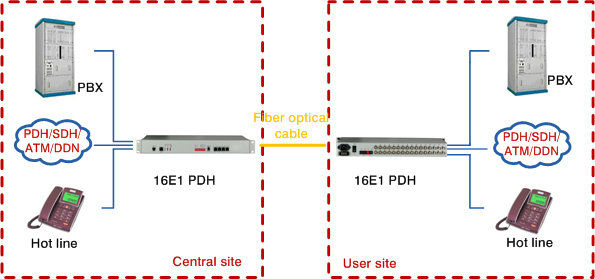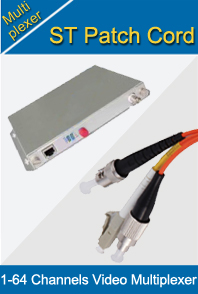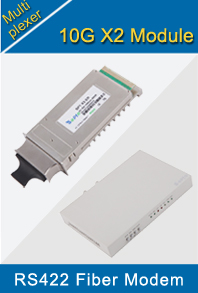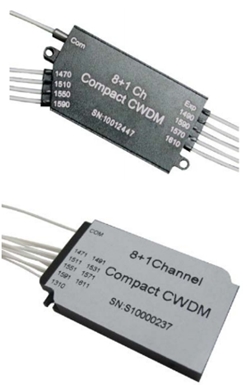-

- Sopto Home
-

- Special Topic
-

- Multiplexer Knowledge
-

- Some Multiplexer Types Introduction
Multiplexer Knowledge
- Why is Multiplexing Needed in Data Communication Systems?
- What is Concept of Multiplexing in Telephone System?
- What is Digital TV Frequency?
- Outlook of the WDM Networks
- DWDM Technical Overview
- CWDM Technical Overview
- How to Activate Cable Modems?
- How to Install a Fiber Optic Modem?
- How do I Choose a Best Fiber Modem?
SOPTO Special Topic
Certificate



Guarantee
Except products belongs to Bargain Shop section, all products are warranted by SOPTO only to purchasers for resale or for use in business or original equipment manufacturer, against defects in workmanship or materials under normal use (consumables, normal tear and wear excluded) for one year after date of purchase from SOPTO, unless otherwise stated...
Return Policies
Defective products will be accepted for exchange, at our discretion, within 14 days from receipt. Buyer might be requested to return the defective products to SOPTO for verification or authorized service location, as SOPTO designated, shipping costs prepaid. .....
Applications
Multiplexers can be used to connect PBX, Hot line and other devices of network from central site to user site through fiber optical cable.
SOPTO Products
- Fiber Optic Transceiver Module
- High Speed Cable
- Fiber Optical Cable
- Fiber Optical Patch Cords
- Splitter CWDM DWDM
- PON Solution
- FTTH Box ODF Closure
- PCI-E Network Card
- Network Cables
- Fiber Optical Adapter
- Fiber Optical Attenuator
- Fiber Media Converter
- PDH Multiplexers
- Protocol Converter
- Digital Video Multiplexer
- Fiber Optical Tools
- Compatible
Related Products
Performance Feature
High integration desig
Low power consumption
Good EMC, EMI
Stable and Reliable
Multiplexer Knowledge
Recommended


Some Multiplexer Types Introduction
Telephone networks first used multiplexing to transmit conversations over twisted pairs of wires. Multiplexing allows people the ability to receive large amounts of information through one line on computer and telecommunications networks. It works with a multiplexer, an apparatus that compresses data. Analog or digital data streams combine on one signal through a shared medium. There are various types of multiplexing that helps transfer data.
Frequency Division Multiplexing (FDM)
Frequency division multiplexing or FDM initially worked with early telephone systems. It splits the various frequencies to maintain numerous users. For example, a multiplexer can divide the frequency to support 6 users or more on a standard sound spectrum with 20 Hz to 20,000 Hz. This type of multiplexer commonly supports FM radio, cable television, and older model analog mobile networks.
Time Division Multiplexing (TDM)
The time division multiplexing was released with digital technology in the late 1950s. With a time division multiplex, more data can pass through one particular network, and it converts analog signals to digital signals. A type of time division multiplexing is the synchronous TDM that people opt for with ISDN. Another type of TDM is a statistical TDM, when the multiplexer uses times slots based on a particular channel's needs.
Dense Wavelength Division Multiplexing (DWDM)
A dense wavelength division multiplexing system is a variation of a FDM or TDM. This type of multiplexing system operates similar to a FDM by dividing the frequency across the channels. However, DWDM also operates with different colored lasers that transmit each segment of frequencies. Some people may refer to this type of multiplexing as a wave division multiplexing.
Code Division Multiplexing
Code division multiplexing is a method of transmitting each channel that has pulses of codes. Additionally, each channel has a different code and relays over a fiber or asynchronously through a multiplexer. Global positioning system use code division multiplexing.
Sopto supplies high quality multiplexing products, like E+E PDH Multiplexer, 1+1 E+E PDH MUX and 1-64 Channels Video Multiplexer and so on. For the newest quotes, please contact a Sopto representative by calling 86-755-36946668, or by sending an email to info@sopto.com. For more info, please browse our website.




